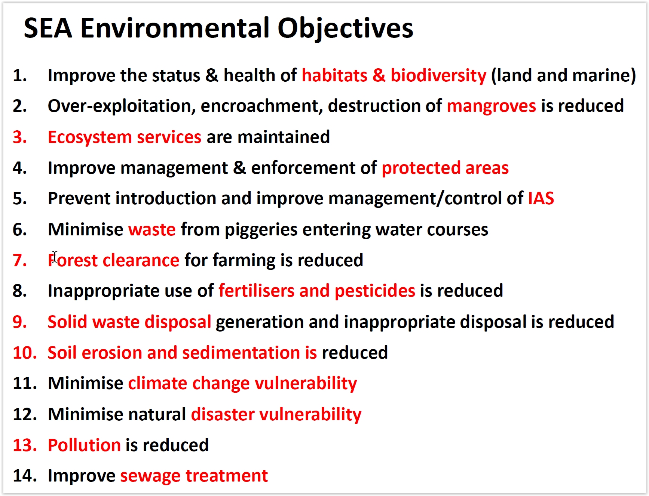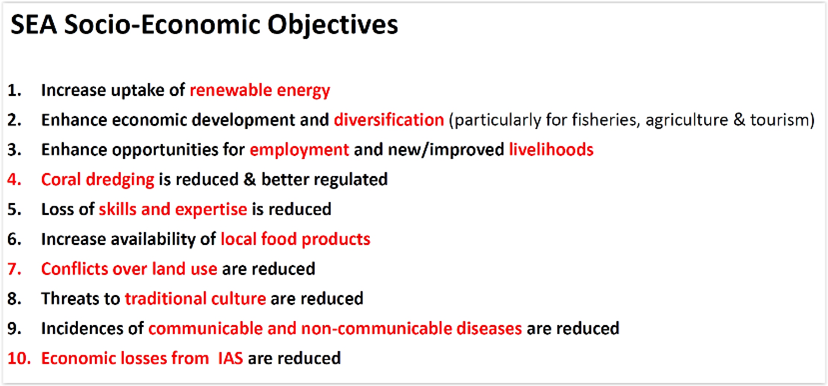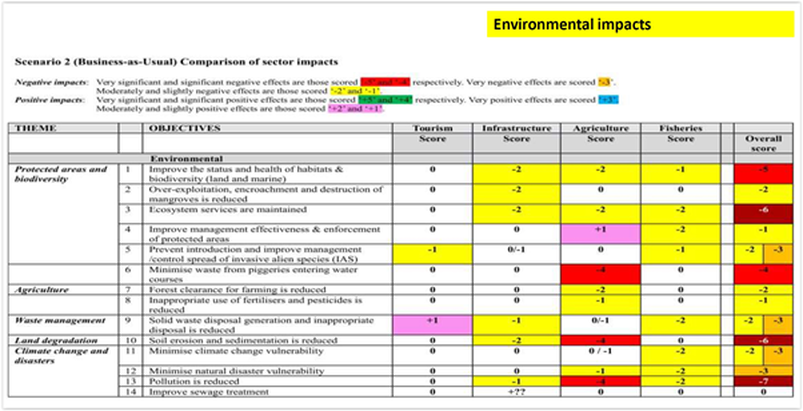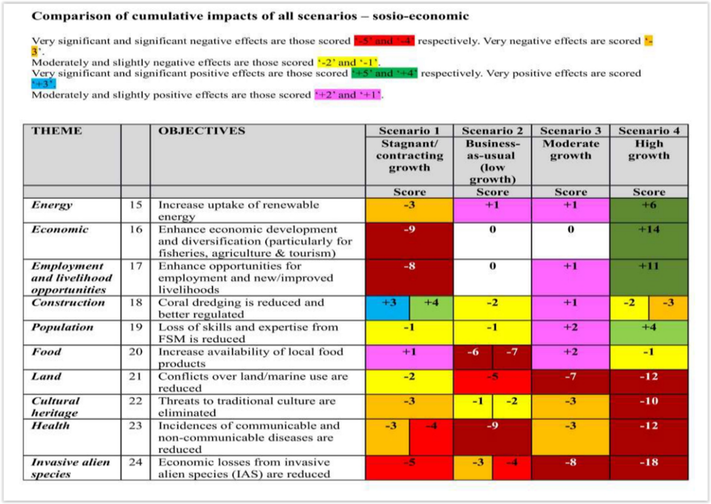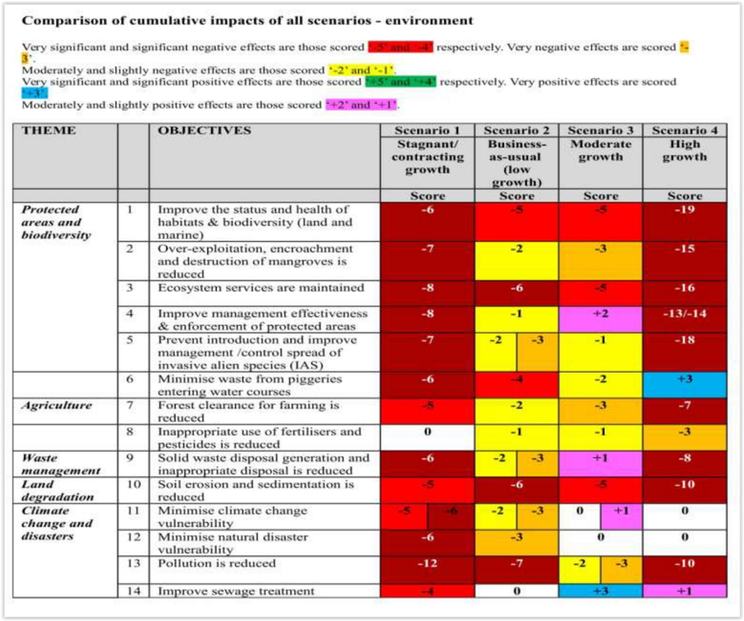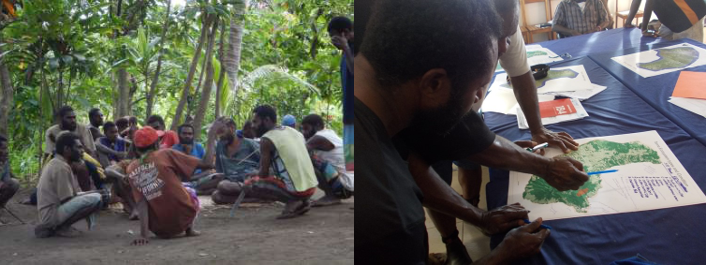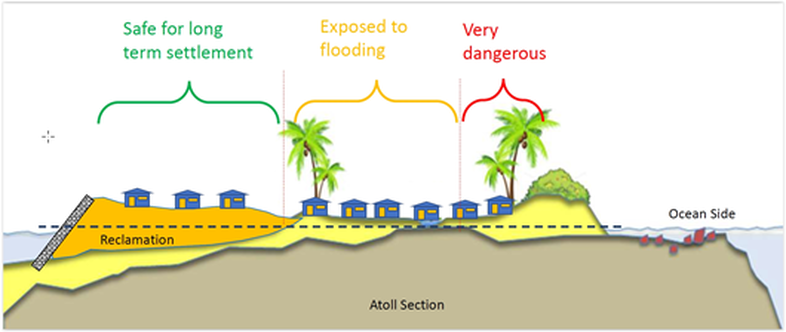- Home
- About Us
- Membership
-
Conferences
- Conference 2024 >
-
Proceedings from Past Conferences
>
- Conference 2023 >
- 2022 - Wellbeing, Sustainability and Impact Assessment: towards more integrated policy-making >
- 2021 - Social Impact Assessment >
- 2019 - Climate Change >
- 2018 - Regional Development
- 2016 - Strategic Environmental Assessment
- 2015 - Where to for Impact Assessment?
- 2014 - Transport Infrastructure
- 2013 Fresh Water Management
- 2012 - Mineral Extraction
- Sign up for updates on future conferences
-
Impact Connector
-
Issue #15 Economic methods and Impact Assessment
>
- Economic methods in impact assessment: an introduction
- The Nature of Economic Analysis for Resource Management
- The State-of-the-Art and Prospects: Economic Valuation of Ecosystem Services in Environmental Impact Assessment
- Economic impact assessment and regional development: reflections on Queensland mining impacts
- Fonterra’s policy on economic incentives for promoting sustainable farming practices
-
Issue #14 Impact assessment for infrastructure development
>
- Impact assessment for infrastructure development - an introduction
- Place Matters: The importance of geographic assessment of areas of influence in understanding the social effects of large-scale transport investment in Wellington
- Unplanned Consequences? New Zealand's experiment with urban (un)planning and infrastructure implications
- Reflections on infrastructure, Town and Country planning and intimations of SIA in the late 1970s and early 1980s
- SIA guidance for infrastructure and economic development projects
- Scoping in impact assessments for infrastructure projects: Reflections on South African experiences
- Impact Assessment for Pacific Island Infrastructure
-
Issue #13 Health impact assessment: practice issues
>
- Introduction to health impact assessment: practice issues
- International Health Impact Assessment – a personal view
- Use of Health Impact Assessment to develop climate change adaptation plans for health
- An integrated approach to assessing health impacts
- Assessing the health and social impacts of transport policies and projects
- Whither HIA in New Zealand….or just wither?
-
Issue #12 Risk Assessment: Case Studies and Approaches
>
- Introduction
- Risk Assessment and Impact Assessment : A perspective from Victoria, Australia
- The New and Adaptive Paradigm Needed to Manage Rising Coastal Risks
- Reflections on Using Risk Assessments in Understanding Climate Change Adaptation Needs in Te Taitokerau Northland
- Values-Based Impact Assessment and Emergency Management
- Certainty about Communicating Uncertainty: Assessment of Flood Loss and Damage
- Improving Understanding of Rockfall Geohazard Risk in New Zealand
- Normalised New Zealand Natural Disaster Insurance Losses: 1968-2019
- Houston, We Have a Problem - Seamless Integration of Weather and Climate Forecast for Community Resilience
- Innovating with Online Data to Understand Risk and Impact in a Data Poor Environment
-
Impact Connector #11 Climate Change Mitigation, Adaptation, and Impact Assessment: views from the Pacific
>
- Introduction
- Climate change adaptation and mitigation, impact assessment, and decision-making: a Pacific perspective
- Climate adaptation and impact assessment in the Pacific: overview of SPREP-sponsored presentations
- Land and Sea: Integrated Assessment of the Temaiku Land and Urban Development Project in Kiribati
- Strategic Environmental Assessment: Rising to the SDG Challenge
- Coastal Engineering for Climate Change Resilience in Eastern Tongatapu, Tonga
- Climate-induced Migration in the Pacific: The Role of New Zealand
-
Impact Connector #10 Climate Change Mitigation and Adaptation
>
- Introduction
- Is a “just transition” possible for Māori?
- Adapting to Climate Change on Scale: Addressing the Challenge and Understanding the Impacts of Asia Mega-Cities
- How responding to climate change might affect health, for better or for worse
- Kanuka, Kereru and carbon capture - Assessing the effects of a programme taking a fresh look at the hill and high country land resource
- Wairoa: Community perceptions of increased afforestation
- Te Kākahu Kahukura Ecological Restoration project: A story within a story
- Issue #9 Impacts of Covid-19 >
-
Issue #8 Social Impact Assessment
>
- Challenges for Social Impact Assessment in New Zealand: looking backwards and looking forwards
- Insights from the eighties: early Social Impact Assessment reports on rural community dynamics
- Impact Assessment and the Capitals Framework: A Systems-based Approach to Understanding and Evaluating Wellbeing
- Building resilience in Rural Communities – a focus on mobile population groups
- Assessing the Impacts of a New Cycle Trail: A Fieldnote
- The challenges of a new biodiversity strategy for social impact assessment (SIA)
- “Say goodbye to traffic”? The role of SIA in establishing whether ‘air taxis’ are the logical next step in the evolution of transportation
- Issue #7 Ecological Impact Assessment >
-
Issue #6 Landscape Assessment
>
- Introduction
- Lives and landscapes: who cares, what about, and does it matter?
- Regional Landscape Inconsistency
- Landscape management in the new world order
- Landscape assessment and the Environment Court
- Natural character assessments and provisions in a coastal environment
- The Assessment and Management of Amenity
- The rise of the THIMBY
- Landscape - Is there a common understanding of the Common?
- Issue #5 Cultural Impact Assessment >
- Issue #4 Marine Environment >
- Issue #3 Strategic Environmental Assessment
- Issue #2
- Issue #1
-
Issue #15 Economic methods and Impact Assessment
>
-
Resources
- Webinars
- IAIA Resources
- United Nations Guidance
- Donors Guidelines and Principles
- Oceania and the Pacific
- Natural Systems >
- Social Impact Assessment
- Health Impact Assessment >
- Cumulative Impact Assessment
- Community and Stakeholder Engagement
- Indigenous Peoples
- Climate Change and Disaster Risk Resilience >
- Urban Development
- Sustainable Development Goals
- Strategic Environmental Assessment
- Regulatory Impact Assessment
- Methods in Impact Assessment
- Community
- 2024 Calendar Year Membership Subscription Renewal
Challenges Promoting Strategic Environmental Assessment in Small Island States: Case of Federated States of Micronesia.
Mr Jorg Anson, FSM Ridge to Reef Pohnpei State Coordinator and FSM R&D Assistant Secretary for the Marine Division Vanessa Fread.
Presenting on behalf of both authors, Jorg first gave a short introduction on the Federated States of Micronesia (FSM) a nation of four States in the North Pacific, before moving on to outline a strategic environmental assessment (SEA) linked to the Ridge to Reef (R2R) project. The R2R project seeks to use integrated ecosystems management and rehabilitation on the high islands of FSM in order to enhance ecosystem services, conserve globally important biodiversity and sustain local livelihoods. Funding comes from the GEF, through UNDP, and the project is being driven by the Department of Environment, Climate Change, & Emergency Management (DECEM), and the Department of Resources and Development (R&D), with the assistance of State Governments and local communities.
The SEA described in the presentation was conducted in Pohnpei State, and involved an assessment of four economic growth strategies, that would be used in the development of an Integrated Environmental Management Plan, and inform the review of the Pohnpei Strategic Development Plan. As SEA was new to FSM, Jorg noted some of the challenges that needed to be addressed: with SEA unfamiliar to most people, there is a lack of experience of SEA and no past examples to help guide new practitioners; skills in environmental assessment, especially independent practitioners/consultants, are limited, as is environmental information and data; and while they may be willing, Government officials would be unlikely to be able to devote much time (beyond workshops / providing information).
This project was an opportunity to develop a form of SEA that could be sustained in FSM, in the face of such challenges. It need to do-able by FSM nationals, and not dependent on expensive external consultants. Ideally it would be a modest, low cost approach using available data sources, that could be carried out in a timely fashion, appropriate to local needs and ways of working, and replicable across all FSM states. The case study SEA provided a model that could be used by others; it was developed with guidance from Barry Dalal-Clayton, an internationally SEA expert, but very much designed and carried out by the Pohnpei SEA team.
The four growth scenarios were evaluated in workshops using criteria that represented environmental and socio-economic objectives that would deliver sustainable outcomes. Included in the environmental objectives was recognition of climate change vulnerability, assuming a 50% loss of coral reefs, but also the linked vulnerability to natural disasters.
The SEA described in the presentation was conducted in Pohnpei State, and involved an assessment of four economic growth strategies, that would be used in the development of an Integrated Environmental Management Plan, and inform the review of the Pohnpei Strategic Development Plan. As SEA was new to FSM, Jorg noted some of the challenges that needed to be addressed: with SEA unfamiliar to most people, there is a lack of experience of SEA and no past examples to help guide new practitioners; skills in environmental assessment, especially independent practitioners/consultants, are limited, as is environmental information and data; and while they may be willing, Government officials would be unlikely to be able to devote much time (beyond workshops / providing information).
This project was an opportunity to develop a form of SEA that could be sustained in FSM, in the face of such challenges. It need to do-able by FSM nationals, and not dependent on expensive external consultants. Ideally it would be a modest, low cost approach using available data sources, that could be carried out in a timely fashion, appropriate to local needs and ways of working, and replicable across all FSM states. The case study SEA provided a model that could be used by others; it was developed with guidance from Barry Dalal-Clayton, an internationally SEA expert, but very much designed and carried out by the Pohnpei SEA team.
The four growth scenarios were evaluated in workshops using criteria that represented environmental and socio-economic objectives that would deliver sustainable outcomes. Included in the environmental objectives was recognition of climate change vulnerability, assuming a 50% loss of coral reefs, but also the linked vulnerability to natural disasters.
For each growth scenario (Stagnant/contracting economic growth; Business-as-usual; Moderate growth; High growth, with a major boost to tourism) the criteria listed above were applied to four major economic sectors—Tourism, Agriculture, Fisheries; and Infrastructure—and a score between +5 and -5 allocated to each criterion for each sector. This is an example of the scoring environmental objectives for the Business-as-usual scenario, across the four sectors.
The final step was to aggregate the information for the four growth scenarios into a table of cumulative impacts, to allow for easier comparison of the scenarios; first the environmental objectives, then the socio-economic objectives.
The recommendation from the SEA was that the Moderate growth scenario would be the best option for meeting the environmental and socio-economic objectives.
Community Involvement for EIA in the Pacific.
Ms Naomay Jibe Tor, Vanuatu Government Principal Officer - Environmental Impact Assessment (EIA), Department of Environmental Protection and Conservation.
Naomay reminded the conference of the importance applying good impact assessment practices, through the crucial engagement of community for Pacific projects, by understanding correct cultural protocols in order to get meaningful effective engagement.
In Vanuatu, as in all island states across the region, local communities have a wealth of traditional knowledge about the natural environment (e.g. the behaviour and cycles of marine organisms, the interdependencies of flowering plants and weather patterns, etc.). In many cases the Pacific this knowledge is not held anywhere on record and therefore it is vital for assessing potential impacts however there are protocols that need to be understood and observed in approaching communities to seek their involvement, especially when wanting to benefit from traditional knowledge: some types of information cannot be shared with other genders, outside a family or clan, or community. Other information is more readily available. Understanding the demographics of stake holder’s interconnectivity of traditional values, gender roles, religion and use of resources in an area is also critical for assessing and mitigating impact to communities. So it is important that appropriate customs and traditions underpin community involvement processes to avoid misunderstandings.
In Vanuatu, as in all island states across the region, local communities have a wealth of traditional knowledge about the natural environment (e.g. the behaviour and cycles of marine organisms, the interdependencies of flowering plants and weather patterns, etc.). In many cases the Pacific this knowledge is not held anywhere on record and therefore it is vital for assessing potential impacts however there are protocols that need to be understood and observed in approaching communities to seek their involvement, especially when wanting to benefit from traditional knowledge: some types of information cannot be shared with other genders, outside a family or clan, or community. Other information is more readily available. Understanding the demographics of stake holder’s interconnectivity of traditional values, gender roles, religion and use of resources in an area is also critical for assessing and mitigating impact to communities. So it is important that appropriate customs and traditions underpin community involvement processes to avoid misunderstandings.
Involving local communities is an important moral issue: to customary owners, land is life and the spiritual home of their ancestor, so any proposals to affect that land have direct implications for those communities. Their approval should be the first step in any process to consider development options for land and associated resources. Moreover, it needs to be a continuing process of engagement, so the community is aware of what is happening throughout decision-making process.
The nature of involvement needs to be carefully thought out. Communities may have had poor experiences in the past with developments and/or distrust the process. These communities need special attention to build rapport and even for those with no experience in developments there is a need to raise awareness of the EIA process among members of the community to familiarise them with the nature, purpose and value of such involvement. If necessary the role of EIA in supporting good decision-making may need explaining, and that should emphasise the importance of community involvement to ensure decisions are accepted by potentially affected individuals and groups in the community. Sharing of stories from other communities and similar developments can help in opening dialogues. Engaging with the community would typically take place using workshops or similar group events sometimes consisting of only one demographic at a time as customary protocols may require; the methods used must be selected carefully, as the process will only yield results if the engagement is effective.
Naomay shared her experience in how for highland communities in Vanuatu a traditional token offering by any approaching party at the boundary marker is needed to be placed and accepted by the community before engagement can commence. This simple gesture is essential to establish respect and trust for these communities and without it she has seen proposals stall indefinitely or derail later in the process.
There is a tendency to think of community involvement as only occurring before decisions are made, but that is not the case. Communities are often the first to feel the impacts of project changes so can also be involved in monitoring processes, following implementation of works. Such involvement can dramatically extend the number of eyes and ears that are able to pick up early signs of change in the environment so appropriate steps can be taken to safeguard community and environmental wellbeing. Community networks help build and maintain goodwill between the project and the community, build social capital, within and between communities, and contribute to ensuring long term sustainability of projects.
The nature of involvement needs to be carefully thought out. Communities may have had poor experiences in the past with developments and/or distrust the process. These communities need special attention to build rapport and even for those with no experience in developments there is a need to raise awareness of the EIA process among members of the community to familiarise them with the nature, purpose and value of such involvement. If necessary the role of EIA in supporting good decision-making may need explaining, and that should emphasise the importance of community involvement to ensure decisions are accepted by potentially affected individuals and groups in the community. Sharing of stories from other communities and similar developments can help in opening dialogues. Engaging with the community would typically take place using workshops or similar group events sometimes consisting of only one demographic at a time as customary protocols may require; the methods used must be selected carefully, as the process will only yield results if the engagement is effective.
Naomay shared her experience in how for highland communities in Vanuatu a traditional token offering by any approaching party at the boundary marker is needed to be placed and accepted by the community before engagement can commence. This simple gesture is essential to establish respect and trust for these communities and without it she has seen proposals stall indefinitely or derail later in the process.
There is a tendency to think of community involvement as only occurring before decisions are made, but that is not the case. Communities are often the first to feel the impacts of project changes so can also be involved in monitoring processes, following implementation of works. Such involvement can dramatically extend the number of eyes and ears that are able to pick up early signs of change in the environment so appropriate steps can be taken to safeguard community and environmental wellbeing. Community networks help build and maintain goodwill between the project and the community, build social capital, within and between communities, and contribute to ensuring long term sustainability of projects.
The trade-offs of adaptation and response in coastal settlements of Tuvalu and other atoll nations.
Director Soseala Tinilau, Department of Environment, Tuvalu.
Director Soseala began his presentation with a brief introduction to Tuvalu, which is situated east of Australia and north of Fiji. It is made up of nine low lying atolls of which Funafuti is the capital. Tuvalu has a land area of approximately 26 km2 with an EEZ of 900,000 km2. The population as of 2018 was around 11,500, of which more than 59% resided in the capital that also has the nation’s only airport.
Being a nation of atolls, an understanding of the nature of atoll processes is important when looking to respond to environmental changes, such as those caused by climate change. Director Soseala outlined the key features of atolls: they are ring-shaped coral reefs that partly or wholly surround a lagoon, many exhibiting arcuate ‘bight-like’ structures. They vary a great deal in morphology (including circle and irregular forms), but are generally small, and have low elevation (<4m above Sea Level)
Given their limited land area and very low elevation, atolls are vulnerable to natural hazards, such as cyclones. The remote nature of Tuvalu’s atolls and dependency on fisheries for food, inter-atoll sea travel to transport supplies and respond to emergencies make the people highly vulnerable to impacts to the ocean.
While humans continue to emit large amounts of CO2 into the atmosphere, more CO2 will end up in the ocean which increases the acidity of the ocean and reduces the oceans ability to adsorb heat and further CO2. Also, the Earths’ temperature increases which triggers melting of polar ice and leading to sea level rise (SLR). Increased temperatures are also increasing the frequency and intensity of cyclones. The consequences of climate change for coastal impacts, Director Soseala observed, are well understood by many in the Pacific. He noted the major ones:
The IPCC has generally projected that climate change may lead to fewer tropical storms overall in the Pacific, however the worst category storms will become more frequent.
Director Soseala cautioned that how we respond to these increasing threats requires careful evaluation, to avoid creating further problems.
Being a nation of atolls, an understanding of the nature of atoll processes is important when looking to respond to environmental changes, such as those caused by climate change. Director Soseala outlined the key features of atolls: they are ring-shaped coral reefs that partly or wholly surround a lagoon, many exhibiting arcuate ‘bight-like’ structures. They vary a great deal in morphology (including circle and irregular forms), but are generally small, and have low elevation (<4m above Sea Level)
Given their limited land area and very low elevation, atolls are vulnerable to natural hazards, such as cyclones. The remote nature of Tuvalu’s atolls and dependency on fisheries for food, inter-atoll sea travel to transport supplies and respond to emergencies make the people highly vulnerable to impacts to the ocean.
While humans continue to emit large amounts of CO2 into the atmosphere, more CO2 will end up in the ocean which increases the acidity of the ocean and reduces the oceans ability to adsorb heat and further CO2. Also, the Earths’ temperature increases which triggers melting of polar ice and leading to sea level rise (SLR). Increased temperatures are also increasing the frequency and intensity of cyclones. The consequences of climate change for coastal impacts, Director Soseala observed, are well understood by many in the Pacific. He noted the major ones:
- Sea level rise – marine flooding/ wave incursion,
- Change to coral reef productivity and structure – atoll shores are living-reef mediated shores. Ocean acidity and heat stress impact reef productivity, structure and composition. These stresses contribute to shoreline vulnerability.
- Change in tropical storm frequency/intensity
The IPCC has generally projected that climate change may lead to fewer tropical storms overall in the Pacific, however the worst category storms will become more frequent.
Director Soseala cautioned that how we respond to these increasing threats requires careful evaluation, to avoid creating further problems.
This is the basis of a number of coastal adaptation projects that have been implemented and more that are about to go ahead, under the Tuvalu Coastal Adaptation Project (TCAP). True coastal adaptation in the atolls, raising the central zone with further reclamation, will require very large scale works, some brave forward thinking, for example through the use of Strategic Environmental Assessment (SEA) and a lot of money.
The Tuvalu Government has an ambitious project in mind to build artificial islands and the current Prime Minister is looking to Japan for help. The artificial islands in Dubai have stood the test of time, being well thought and planned. Another model is the Maldives, which has built artificial islands to expand land area for adaptation purposes; but as Director Soseala pointed out “they do this on covering existing coral reef, so is it really a success story?” Perhaps so for a politician, but not for a conservationist concerned with the protection of important coral reef ecosystems or the peoples dependent on that reef for their livelihood. This is an example of some of the trade-offs that have to be faced when working in this area.
But of equal concern is the effect of poor planning and insufficient studies, resulting in projects that create more problems. For example, Tuvalu’s Nukufetau seawall project has resulted in significant changes to the environment (beaches and coastal functions) and to people accessing the channel/shipping. The new seawall has changed the coastal sand deposition environment with infilling of the harbour channel to make it impassable and scouring of the foreshore now needing remedial action. The Director asked “Even with world class modelling do we truly know what will happen to lagoons, currents, coral, fish, etc. with reclamation and dredging?”
He drew upon other examples from Tuvalu of rehabilitation of borrow pits (dating from World War 2 when sand was excavated for airstrips), and the Funafuti Recreation Area (FRA) project, both of which were a big success socially as they created more beach area for local people to use. But the impacts on the lagoon due to extensive dredging to provide the sand for these projects are unknown as they also removed corals without any baseline data. We don't have money and staff to operate long term monitoring of our atoll ecosystems. The longevity of the FRA project will be tested with evidence of reclamation slumping after “normal” tidal cycles; it is not known how the facility will be affected by cyclones or other large wave events.
Will coastal adaptation do more harm than good in the long run? Will this new reclaimed land really keep us safe and healthy?
How do we weigh up social v environmental factors? Perhaps losing beaches but gaining more land, giving us more land but possibly harming our fish habitats (and therefore primary food source and livelihoods). What is the point of building more land to stay on your island if you have lost all the fish your people used to live on? And then there is the questions of deciding ownership of the new land (a scarce resource in atolls) and what it will be used for, is it the developers land, governments or the people whose land used to extend to the sea who now don’t have direct access to launch their boats – change of land ownership and resource access could create social problems.
Beyond coastal adaptation, the Tuvalu Government’s other ambitious plan is to build a new airstrip in the lagoon near Funafuti, leaving the existing one for people to retreat from the coast and build further inland. Such a project will challenge our ability to anticipate the impacts of such a development and prevent damaging important environmental systems, such as reefs, fisheries and social dynamics.
We can sustain atoll islands provided they are surrounded by healthy and productive reefs, and sediment pathways are not obstructed. Healthy reefs naturally accrete to attenuate waves and replenish beaches and atolls overtime they adapt to sea level rise. We need to support beneficial natural processes, our adaptations must be well planned, using proven technologies. With the proliferation of adaptation projects being undertaken in Tuvalu, there are many Universities and NGOs in the region that can contribute, through research and capacity development. And the assistance of SPREP in developing EIA and SEA guidance and resources for the region is acknowledged and appreciated.
But if we do not slow global warming then what next - do we just continue to reclaim to counter the rising tides until we have no sand left in the lagoon and no fish?
The Tuvalu Government has an ambitious project in mind to build artificial islands and the current Prime Minister is looking to Japan for help. The artificial islands in Dubai have stood the test of time, being well thought and planned. Another model is the Maldives, which has built artificial islands to expand land area for adaptation purposes; but as Director Soseala pointed out “they do this on covering existing coral reef, so is it really a success story?” Perhaps so for a politician, but not for a conservationist concerned with the protection of important coral reef ecosystems or the peoples dependent on that reef for their livelihood. This is an example of some of the trade-offs that have to be faced when working in this area.
But of equal concern is the effect of poor planning and insufficient studies, resulting in projects that create more problems. For example, Tuvalu’s Nukufetau seawall project has resulted in significant changes to the environment (beaches and coastal functions) and to people accessing the channel/shipping. The new seawall has changed the coastal sand deposition environment with infilling of the harbour channel to make it impassable and scouring of the foreshore now needing remedial action. The Director asked “Even with world class modelling do we truly know what will happen to lagoons, currents, coral, fish, etc. with reclamation and dredging?”
He drew upon other examples from Tuvalu of rehabilitation of borrow pits (dating from World War 2 when sand was excavated for airstrips), and the Funafuti Recreation Area (FRA) project, both of which were a big success socially as they created more beach area for local people to use. But the impacts on the lagoon due to extensive dredging to provide the sand for these projects are unknown as they also removed corals without any baseline data. We don't have money and staff to operate long term monitoring of our atoll ecosystems. The longevity of the FRA project will be tested with evidence of reclamation slumping after “normal” tidal cycles; it is not known how the facility will be affected by cyclones or other large wave events.
Will coastal adaptation do more harm than good in the long run? Will this new reclaimed land really keep us safe and healthy?
How do we weigh up social v environmental factors? Perhaps losing beaches but gaining more land, giving us more land but possibly harming our fish habitats (and therefore primary food source and livelihoods). What is the point of building more land to stay on your island if you have lost all the fish your people used to live on? And then there is the questions of deciding ownership of the new land (a scarce resource in atolls) and what it will be used for, is it the developers land, governments or the people whose land used to extend to the sea who now don’t have direct access to launch their boats – change of land ownership and resource access could create social problems.
Beyond coastal adaptation, the Tuvalu Government’s other ambitious plan is to build a new airstrip in the lagoon near Funafuti, leaving the existing one for people to retreat from the coast and build further inland. Such a project will challenge our ability to anticipate the impacts of such a development and prevent damaging important environmental systems, such as reefs, fisheries and social dynamics.
We can sustain atoll islands provided they are surrounded by healthy and productive reefs, and sediment pathways are not obstructed. Healthy reefs naturally accrete to attenuate waves and replenish beaches and atolls overtime they adapt to sea level rise. We need to support beneficial natural processes, our adaptations must be well planned, using proven technologies. With the proliferation of adaptation projects being undertaken in Tuvalu, there are many Universities and NGOs in the region that can contribute, through research and capacity development. And the assistance of SPREP in developing EIA and SEA guidance and resources for the region is acknowledged and appreciated.
But if we do not slow global warming then what next - do we just continue to reclaim to counter the rising tides until we have no sand left in the lagoon and no fish?
NZAIA Incorporated is a registered charity
#CC54658
This website and all its content is SSL Protected.
Privacy Policy
#CC54658
This website and all its content is SSL Protected.
Privacy Policy
- Home
- About Us
- Membership
-
Conferences
- Conference 2024 >
-
Proceedings from Past Conferences
>
- Conference 2023 >
- 2022 - Wellbeing, Sustainability and Impact Assessment: towards more integrated policy-making >
- 2021 - Social Impact Assessment >
- 2019 - Climate Change >
- 2018 - Regional Development
- 2016 - Strategic Environmental Assessment
- 2015 - Where to for Impact Assessment?
- 2014 - Transport Infrastructure
- 2013 Fresh Water Management
- 2012 - Mineral Extraction
- Sign up for updates on future conferences
-
Impact Connector
-
Issue #15 Economic methods and Impact Assessment
>
- Economic methods in impact assessment: an introduction
- The Nature of Economic Analysis for Resource Management
- The State-of-the-Art and Prospects: Economic Valuation of Ecosystem Services in Environmental Impact Assessment
- Economic impact assessment and regional development: reflections on Queensland mining impacts
- Fonterra’s policy on economic incentives for promoting sustainable farming practices
-
Issue #14 Impact assessment for infrastructure development
>
- Impact assessment for infrastructure development - an introduction
- Place Matters: The importance of geographic assessment of areas of influence in understanding the social effects of large-scale transport investment in Wellington
- Unplanned Consequences? New Zealand's experiment with urban (un)planning and infrastructure implications
- Reflections on infrastructure, Town and Country planning and intimations of SIA in the late 1970s and early 1980s
- SIA guidance for infrastructure and economic development projects
- Scoping in impact assessments for infrastructure projects: Reflections on South African experiences
- Impact Assessment for Pacific Island Infrastructure
-
Issue #13 Health impact assessment: practice issues
>
- Introduction to health impact assessment: practice issues
- International Health Impact Assessment – a personal view
- Use of Health Impact Assessment to develop climate change adaptation plans for health
- An integrated approach to assessing health impacts
- Assessing the health and social impacts of transport policies and projects
- Whither HIA in New Zealand….or just wither?
-
Issue #12 Risk Assessment: Case Studies and Approaches
>
- Introduction
- Risk Assessment and Impact Assessment : A perspective from Victoria, Australia
- The New and Adaptive Paradigm Needed to Manage Rising Coastal Risks
- Reflections on Using Risk Assessments in Understanding Climate Change Adaptation Needs in Te Taitokerau Northland
- Values-Based Impact Assessment and Emergency Management
- Certainty about Communicating Uncertainty: Assessment of Flood Loss and Damage
- Improving Understanding of Rockfall Geohazard Risk in New Zealand
- Normalised New Zealand Natural Disaster Insurance Losses: 1968-2019
- Houston, We Have a Problem - Seamless Integration of Weather and Climate Forecast for Community Resilience
- Innovating with Online Data to Understand Risk and Impact in a Data Poor Environment
-
Impact Connector #11 Climate Change Mitigation, Adaptation, and Impact Assessment: views from the Pacific
>
- Introduction
- Climate change adaptation and mitigation, impact assessment, and decision-making: a Pacific perspective
- Climate adaptation and impact assessment in the Pacific: overview of SPREP-sponsored presentations
- Land and Sea: Integrated Assessment of the Temaiku Land and Urban Development Project in Kiribati
- Strategic Environmental Assessment: Rising to the SDG Challenge
- Coastal Engineering for Climate Change Resilience in Eastern Tongatapu, Tonga
- Climate-induced Migration in the Pacific: The Role of New Zealand
-
Impact Connector #10 Climate Change Mitigation and Adaptation
>
- Introduction
- Is a “just transition” possible for Māori?
- Adapting to Climate Change on Scale: Addressing the Challenge and Understanding the Impacts of Asia Mega-Cities
- How responding to climate change might affect health, for better or for worse
- Kanuka, Kereru and carbon capture - Assessing the effects of a programme taking a fresh look at the hill and high country land resource
- Wairoa: Community perceptions of increased afforestation
- Te Kākahu Kahukura Ecological Restoration project: A story within a story
- Issue #9 Impacts of Covid-19 >
-
Issue #8 Social Impact Assessment
>
- Challenges for Social Impact Assessment in New Zealand: looking backwards and looking forwards
- Insights from the eighties: early Social Impact Assessment reports on rural community dynamics
- Impact Assessment and the Capitals Framework: A Systems-based Approach to Understanding and Evaluating Wellbeing
- Building resilience in Rural Communities – a focus on mobile population groups
- Assessing the Impacts of a New Cycle Trail: A Fieldnote
- The challenges of a new biodiversity strategy for social impact assessment (SIA)
- “Say goodbye to traffic”? The role of SIA in establishing whether ‘air taxis’ are the logical next step in the evolution of transportation
- Issue #7 Ecological Impact Assessment >
-
Issue #6 Landscape Assessment
>
- Introduction
- Lives and landscapes: who cares, what about, and does it matter?
- Regional Landscape Inconsistency
- Landscape management in the new world order
- Landscape assessment and the Environment Court
- Natural character assessments and provisions in a coastal environment
- The Assessment and Management of Amenity
- The rise of the THIMBY
- Landscape - Is there a common understanding of the Common?
- Issue #5 Cultural Impact Assessment >
- Issue #4 Marine Environment >
- Issue #3 Strategic Environmental Assessment
- Issue #2
- Issue #1
-
Issue #15 Economic methods and Impact Assessment
>
-
Resources
- Webinars
- IAIA Resources
- United Nations Guidance
- Donors Guidelines and Principles
- Oceania and the Pacific
- Natural Systems >
- Social Impact Assessment
- Health Impact Assessment >
- Cumulative Impact Assessment
- Community and Stakeholder Engagement
- Indigenous Peoples
- Climate Change and Disaster Risk Resilience >
- Urban Development
- Sustainable Development Goals
- Strategic Environmental Assessment
- Regulatory Impact Assessment
- Methods in Impact Assessment
- Community
- 2024 Calendar Year Membership Subscription Renewal
